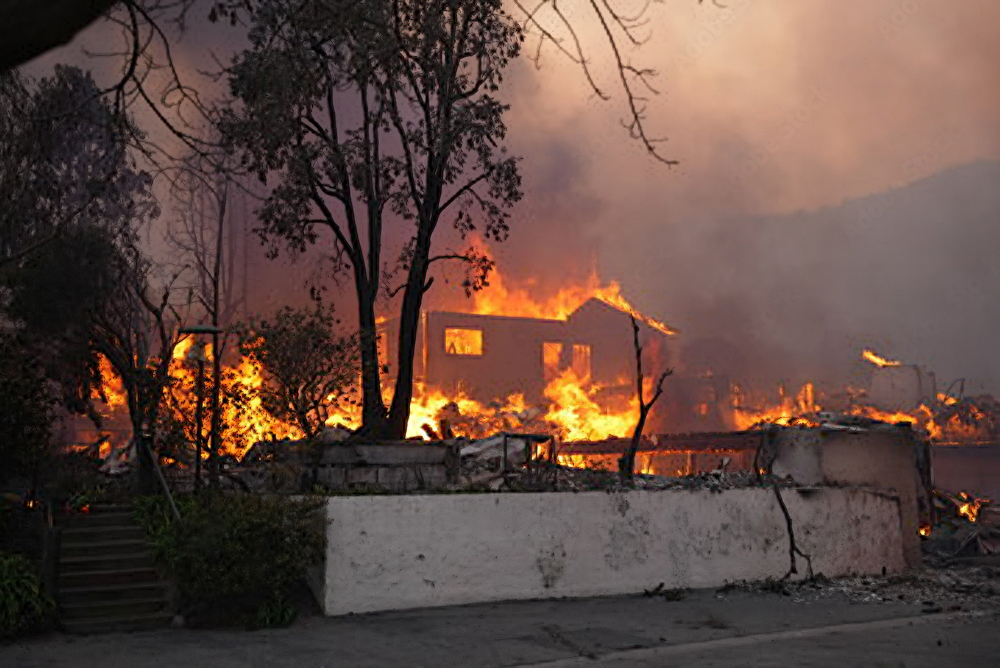CA Housing Agencies: Build Fire-Safe, Non-Toxic Homes
Secretary Tomiquia Moss, California Business, Consumer Services and Housing Agency

6,928. That’s how many wildfires have been reported in California so far in 2025. Wildfires are nothing new in California, but their severity is dramatically increasing as the climate crisis escalates. To make matters worse, today most homes, buildings, and furniture are made of plastic. While these plastic materials—like all plastics—pollute throughout their entire existence, they pose even greater hazards to human health and the environment during wildfires.
When plastics burn, they release some of the most toxic chemicals along with hazardous microplastics into already dangerous wildfire smoke. This smoke poses severe health hazards to those exposed, particularly firefighters and other first responders, people with chronic illnesses, fetuses, and pregnant people. Even after the fires and smoke have cleared, plastic-laced ash and chemical residues remain, polluting air, soils, and water, threatening local agriculture, ecosystems and the health of people living in wildfire zones.
But it doesn’t have to be this way. There are healthier, more sustainable alternatives readily available to replace most plastic building materials. In the recovery period following wildfire damage, and as a proactive approach to prevent damage from future fires, policymakers must seek ways to reform our built environment, promote safer alternatives, and reduce or eliminate the use of plastic building materials.
Sign the petition to urge the California Business, Consumer Services, and Housing Agency to advance the use of healthier building materials.
This is an opportunity to build back better after wildfires like those that struck Los Angeles in January 2025, and create healthy and resilient neighborhoods, without plastic pollution.
Sponsored by
Additional Sponsors
To:
Secretary Tomiquia Moss, California Business, Consumer Services and Housing Agency
From:
[Your Name]
In January of 2025, wildfires in Los Angeles burned across more than 50,500 acres of land and damaged or destroyed more than 16,000 homes and other structures. The toxic pollution from these wildfires was made even worse by the plastic materials that fill our homes.
Most modern buildings, homes, and furniture are made primarily from plastics. Very common are plastic appliances, plastic foam mattresses, chairs, and couches covered in plastic fabric; plastic rugs, and other furnishings. Plastic flooring, paints, polyvinyl chloride (PVC) pipes, roofing, siding, and other building materials are widely used.
Plastics contain any mixture of more than 16,000 chemicals, at least 4,200 of which are already known to be toxic to people and the environment. Some of the most dangerous chemicals that plastics release when burned are bisphenols, dioxins, furans, and volatile organic chemicals (VOCs). Many of these chemicals are linked to cancer or other severe health hazards. Many plastic chemicals are also highly persistent, meaning they last for long periods of time in the environment without degrading. Microplastics are also released into the air when burned.
For example, plastic PVC pipes used in drinking water systems can release benzene, a dangerous VOC, that can jeopardize drinking water safety for months or years.The chemical and microplastic pollution from burnt plastic contaminates air, water, and soil and has profound lasting impacts on our health, food systems, and environment.
These plastic building materials, although more toxic, are often more readily available as a result of subsidies directed at the petrochemical and plastics industries. Such subsidies allow plastics to often be sold at lower prices than plastic-free materials, making it difficult for builders and developers to choose safer options.
The California Business, Consumer Services, and Housing Agency can address this cost and health differential by creating incentives for builders and developers to choose healthier, less flammable materials. California would not be the first state to do this. For example, the Minnesota Housing Finance Agency created a rewards system for project teams that (1) attended training on Informed Healthier Material Selection, (2) benchmarked their current product choices using the tool Informed, and (3) made healthier material selections in specific product categories.
California, as a highly prone wildfire state and an environmental leader, must act to reform our building and construction sectors. We urge you to create incentives for developers and builders that attend fire-safe, healthy materials training, report on material choices, and ultimately choose better materials for their structures. By deplastifying our built environment, California can prevent future disasters and create more resilient, healthy neighborhoods.



